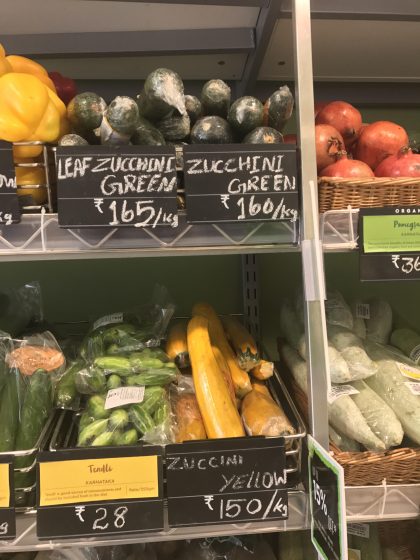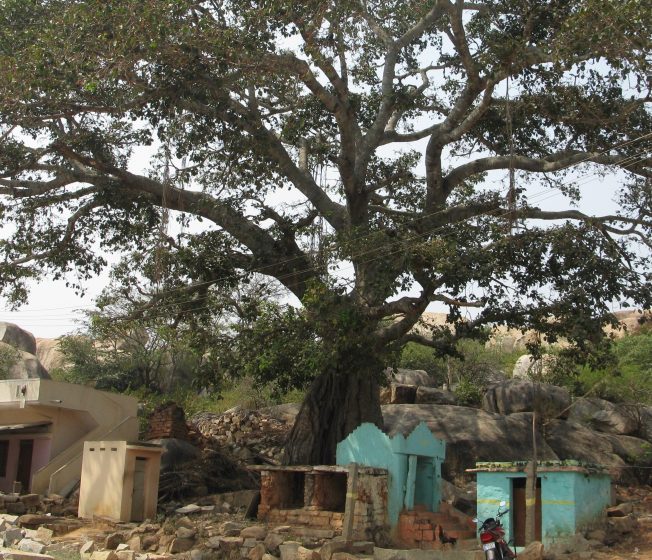Dialogue focused on more sustainable and resilient futures, though necessary, is insufficient by itself. At its core, these movements must be driven by a new collective culture, shaped by normative ideals of equity, justice and sustainability.
Nowhere is this more true than in cities. Cities contain incredibly dense combinations of people from very different social contexts, amalgamated in ways that they would never be in rural areas. This can produce cultural symphony, or cacophony! The breakdown of societal restraints on gender, caste and other artificial barriers, and the resultant opportunity to converse across boundaries, can stimulate great innovation and creativity. Indeed, many cities excel at this. But the unprecedented socio-economic heterogeneities and inequalities that we find in cities have also led to petty daily conflicts and riots, scenes of banal crime and horrific brutality. The often-lamented loss of urban connect between neighbours leads to a fragmentation of urban communities. Perhaps as a consequence, many cities have witnessed the rapid disappearance of urban ecosystems—with forests, wetlands, parks and lakes giving way to high rise apartments and garbage dumps. Provoked by the obvious deterioration, many cities are forging nascent efforts to develop new urban commons. In an urban context, this requires dialogue between communities and the State, as Sheila Foster’s recent research on the “Co-City” demonstrates. Yet dialogue, though necessary, is insufficient by itself. At its core, these movements must be driven by a new collective culture, shaped by normative ideals of equity, justice and sustainability.

This is particularly challenging in cities of the Global South—in countries such as India. In Mumbai, 10,000 families migrate into the city each month. By 2025, India may have the largest number of migrants in the world, of whom most will end up in cities. Some will be affluent, tech-sector workers. Many more will live in slums, often on very little. Yet across most sectors of society, levels of consumption are on the rise in India’s cities. This is clear by a casual look at the constitution of urban garbage in most cities for instance, choked with plastic—plastic that comes from the supermarkets and stores in the city that advertise and sell packaged toys, gadgets and even vegetables wrapped quite pointlessly in plastic film.

When a culture of conspicuous consumption overtakes cities, it subverts existing cultures. Many argue that India has had a “natural” affinity towards sustainability, with diverse faiths that consider nature as sacred. In cities such as Bangalore, sacred Ficus trees survive when other species are cut down to make way for infrastructure projects, for instance. But as urban settlements grow, so does the desire to convert a humble shrine under the canopy of a tree into something larger. Thus many trees are enclosed within walls to build a small shrine, which slowly grows to prominence to become a large temple. The original tree, its branches trimmed and its roots enclosed, becomes weak and eventually gives way to the representation of sacredness in built form.

Urban water systems have also been subjected to this alteration in the nature of the sacred. Many religious festivals in India involve water. During the famous Durga puja season in Kolkata, tens of thousands of idols of Durga are purchased by individual homes and community associations, and later immersed in the city’s lakes and the sea. These were once small in size, made of clay taken from lake beds, painted with vegetable dyes, and then later returned to the same lake via immersion. Now, community associations compete to install larger and larger idols, which despite a ban are mostly made out of plaster of Paris, painted with toxic lead and mercury-based paints. When immersed, these idols pose a significant challenge to the same lakes that the Goddess is supposed to protect. Yet again, the normative core idea, of the worship of nature, has given way to a representation in very different form.

When I returned from Resilience 2017, in my home town of Bangalore, the Ganesha festival was just beginning. Worshipped as the Lord of Beginnings and the Remover of Obstacles, the Ganesha festival is an important one for many Indians. In Bangalore, as in Calcutta, the harmful environmental effects of submerging plaster of Paris Ganesha idols in the city’s already polluted lakes is well known. Yet despite a ban that has been in existence for the past 3 years, the streets continue to be lined with these idols. In recent years, there has been a growing citizen movement to encourage a return to “natural” materials—Ganesha idols made with wet clay, with grains and seeds, and other natural material. Many people that I know have now moved away from plaster of Paris idols to these natural materials, and indeed, they are becoming more visible on street fronts and in shops for sale, than in the years past. In my home, my daughter now uses the mud from our garden to make our Gauri (Ganesha’s mother) and Ganesha—we later immerse them in a bucket, and carefully pour the mud back into our garden, under the canopy of our mango tree. From earth to earth, this simple practice beautifully symbolises the cycle of life.

Yet overwhelmingly, the collective collection of plaster of Paris Ganeshas far outweighs those of natural materials—by a large amount. While many individuals have moved towards more sustainable practices, often motivated by conversations with like-minded friends, we continue to speak in silos. Most community associations prefer the artificial idols, being bigger, more colourful, and more conspicuous. And it turns out to be particularly difficult to have conversations with a motley urban collective, on seemingly waffly issues such as sustainability.
What does this tell us about the attempt to re-culture the urban commons, via a new collective movement? Changing culture is not easy—changing collective culture is particularly challenging. And yet this is the task we have at hand, if we are to engage in collective urban conversations about urban resilience and sustainability. Bangalore’s lakes, in which idols of Gauri and Ganesha have been immersed for centuries, now also host immersion of Durga idols, thanks to the city’s now substantial Bengali population—and act as sites for other festivals such as Chat puja as well, in response to migrants from other parts of the country. How does the city engage in conversations with each of these collective groups about sustainability? And yet—how can it not?
Informal settlements or slums provide a fascinating context within which to study the evolving culture of sustainability, for instance. As I describe in my book Nature in the City: Bengaluru in the Past, Present and Future many slums in Bangalore, though composed largely of migrants, have a high collective ethos of urban conservation, planting and carefully nurturing a wide diversity of species in cramped spaces, despite challenges of water availability. Indeed, the greatest proportion of native species we find in Bangalore is in its’ slums. The strong social ties between neighbours, and the high dependence on nature, seem to play a role in fostering this collective sense of sustainability. This may be more complex in wealthier residential communities, where many do not know their neighbours well.
The challenge of re-culturing a collective urban ethos of sustainability is profound, but essential, for urban resilience in the Global South. There are no easy answers. But equally, there is no escaping the need to make progress on this front.
Harini Nagendra
Bangalore







Leave a Reply